Stories We Tell
April 22, 2022
Visiting Katsura Imperial Villa 2
Author: Yukari Matsumoto
Reading time:6min
Hi there.
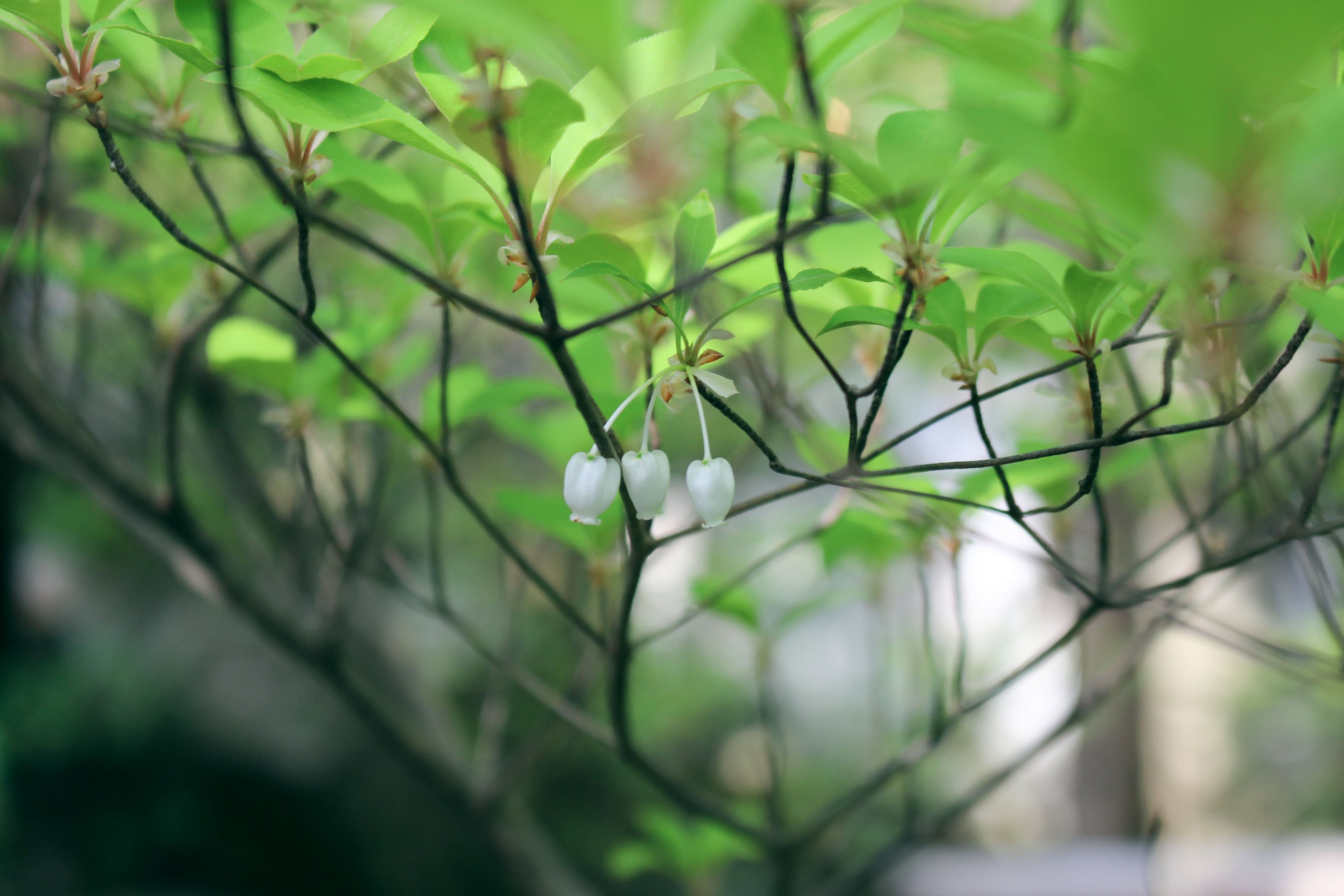
The season of fresh green leaves has come! Most of the trees in our garden have leafed out, and the garden looks completely different from winter. At this time of year, our garden will be filled with white flowers, such as Japanese snowbells, reeves spirea and kalmia. I found pearl bush blooming as well. Enkianthus perulatus is also looking very pretty as if they lean on each other. I hope you enjoy this beautiful season to the fullest.
Visiting Katsura Imperial Villa
I will write again about my visit to Katsura Imperial Villa which I wrote about in my last blog. I learned a lot from the visit and many designs can be applied to our future garden design.
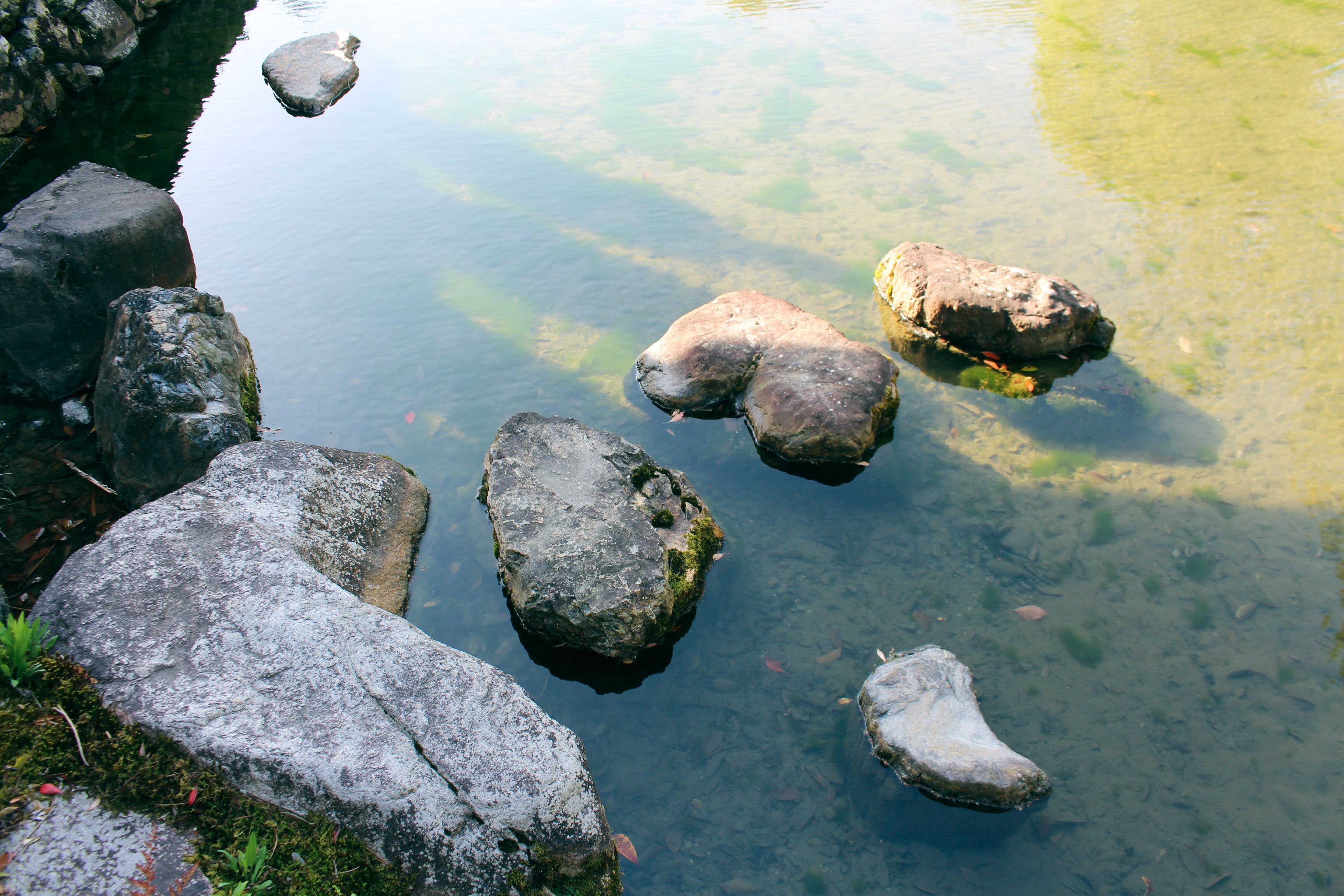
These are the stones for “nagare-chouzu-流れ手水-” at Shokin-tei pavilion-松琴亭-*. “Nagare-chouzu” is a natural tsukubai (a stone wash basin found in a Japanese garden) that uses the flow of a pond or stream. It was a precious experience for me as I had never seen it before. I was very impressed by how luxurious it is to use water from the vast pond and the way it blended into nature.
Shokin-tei pavilion* is the tea house in Katsura Imperial Villa. It is one of the most fascinating architectural buildings in Japan.
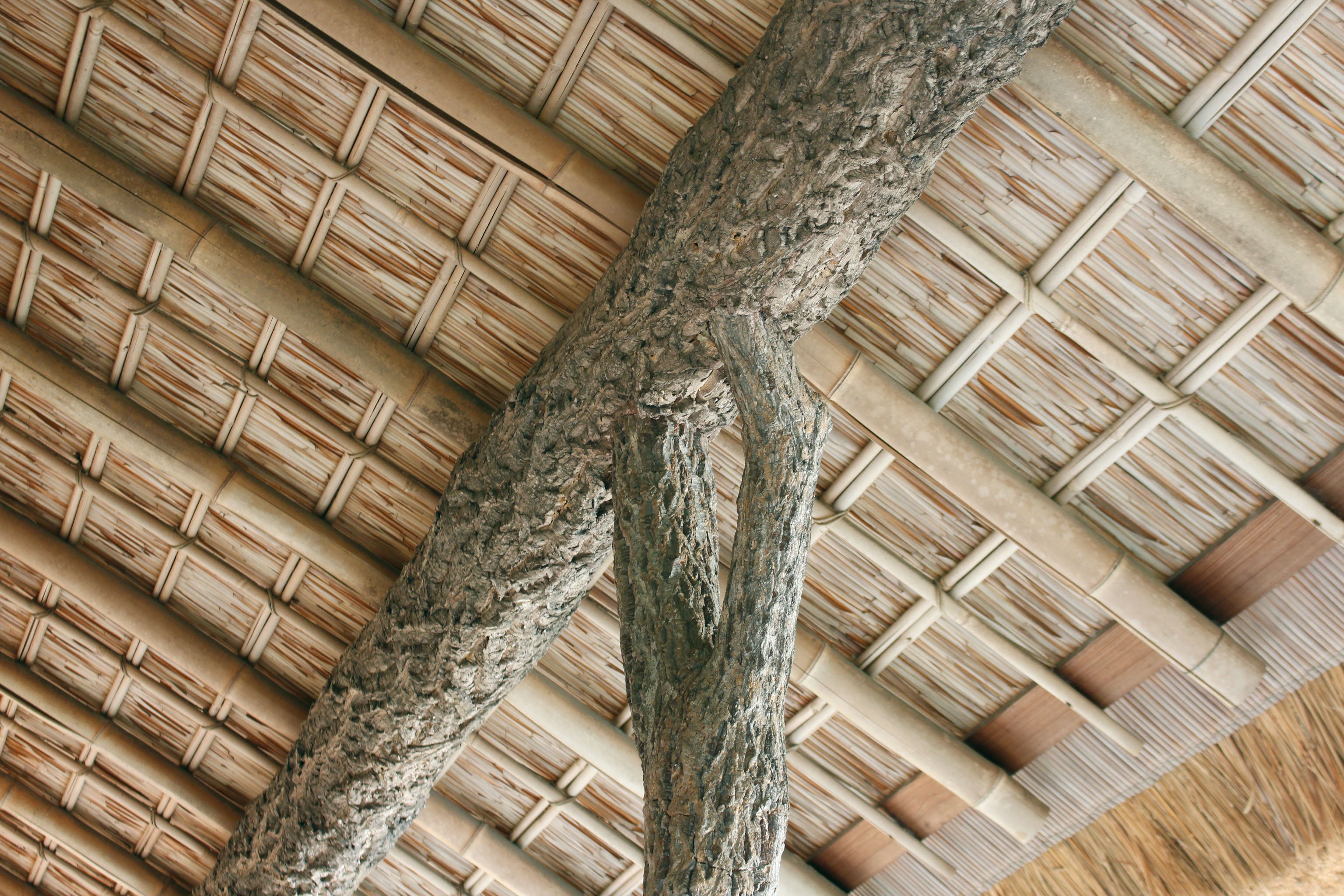
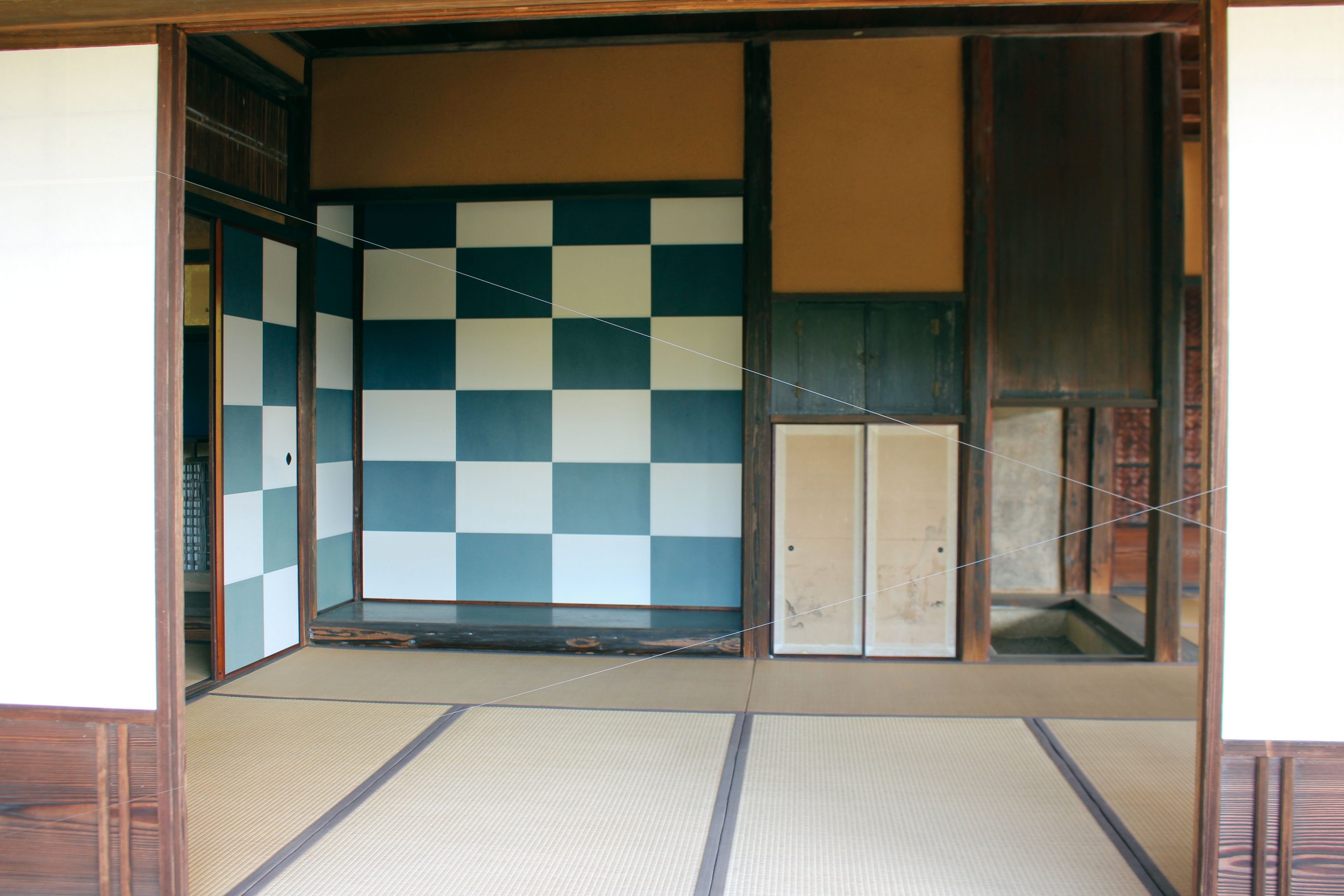
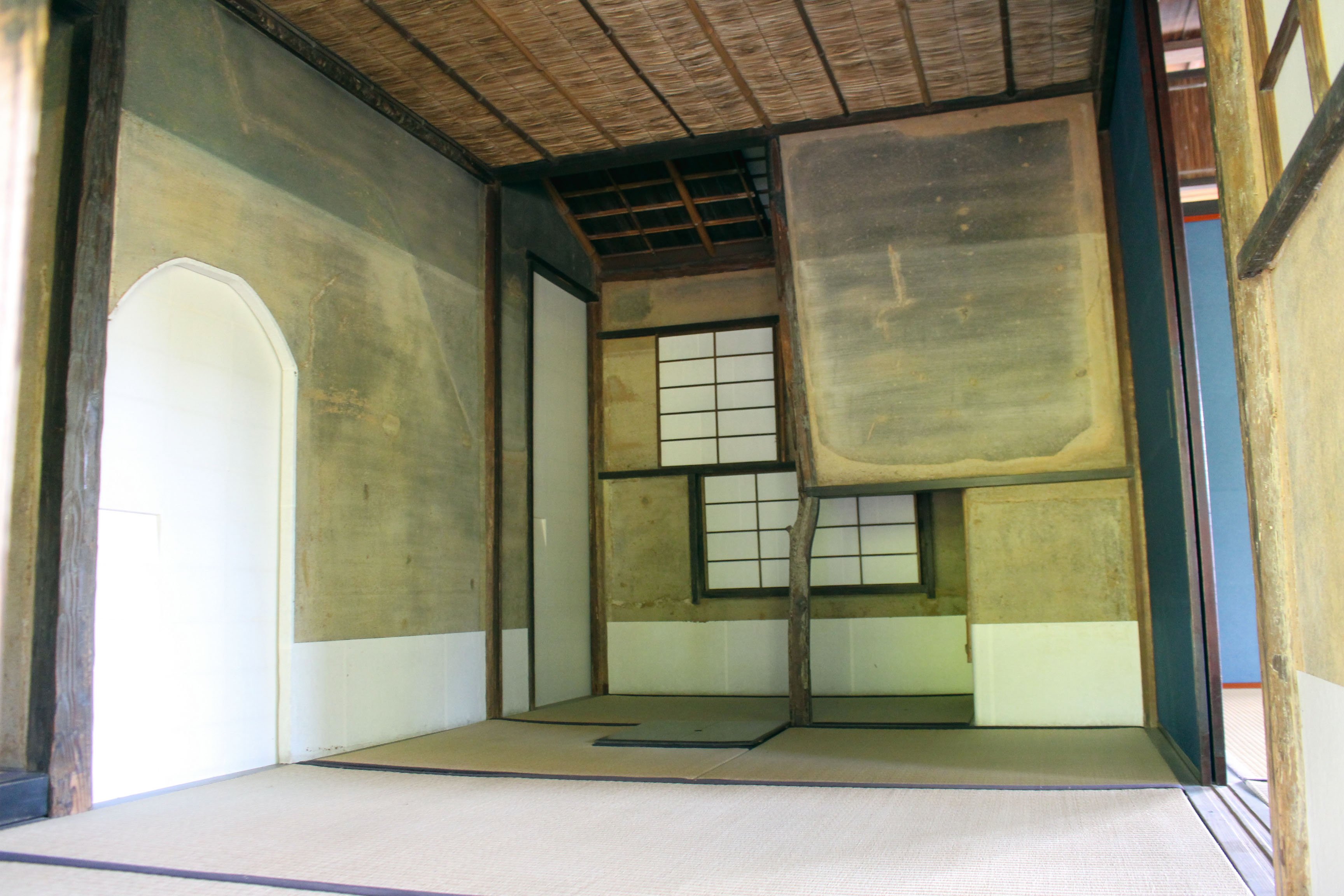
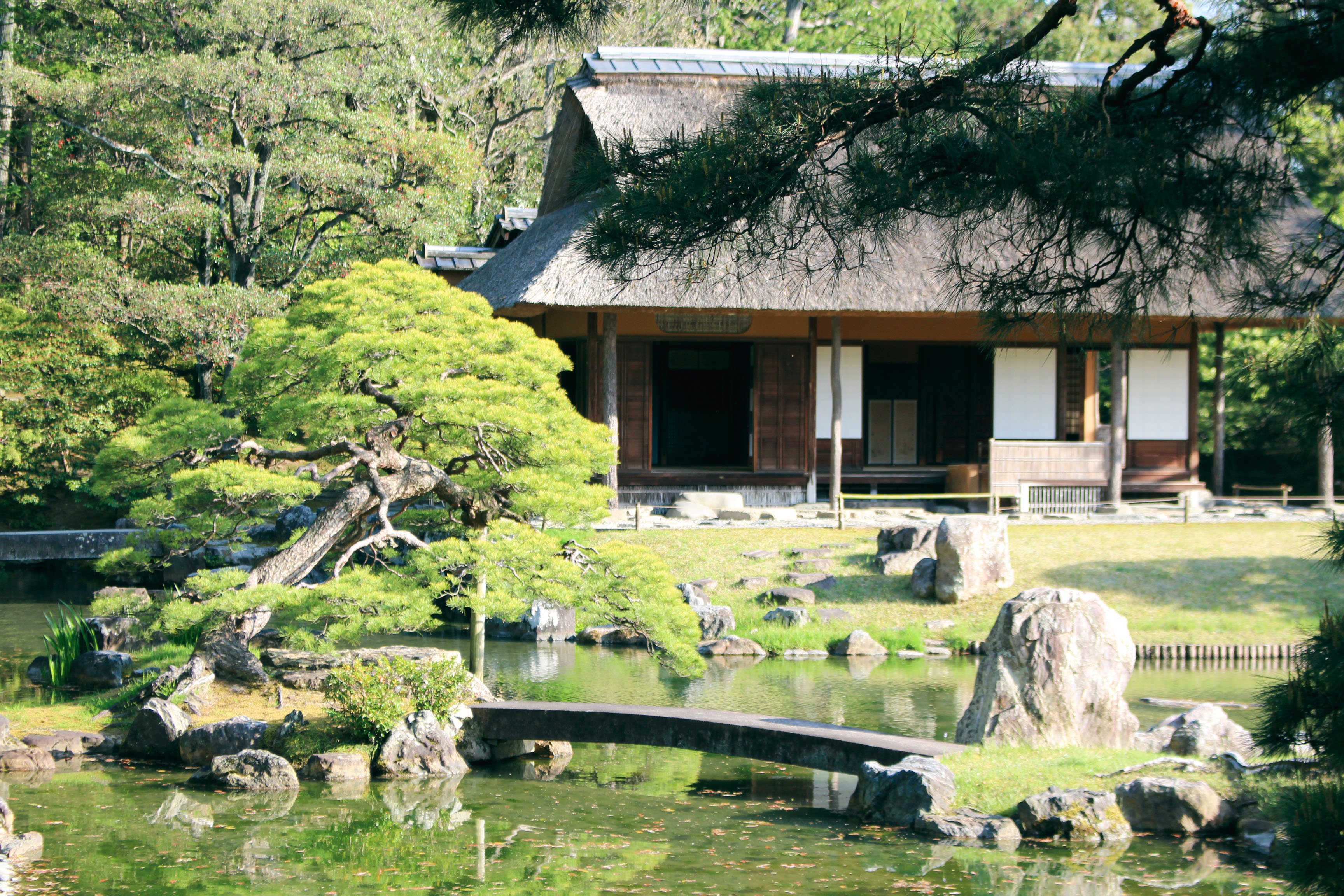
Most of the pillars used in Shokin-tei are made of a Chinese cork oak log with bark, but there is one pillar made of a different tree species (I forgot what kind of tree it was though…). And the reason for that was that “Imperfection is beautiful.” This shows that people used to find beauty in imperfections rather than in perfection. The trees we use for gardens are also selected with an eye toward interesting and irregular shapes rather than ordinal shapes. If we aim for a natural-looking garden, there may be no such thing as perfection.
The sliding screen with indigo and white checkered pattern, eight light-shaded windows, curved central pillar and various remarkable designs are very innovative and cutting-edge in all ages. The landscape including Shokintei seen from the garden was impressive. And I feel that I want to value the sensitivity to feel it is beautiful, as it applies a lot to our vision of “Gardens that integrate with the surrounding buildings.”
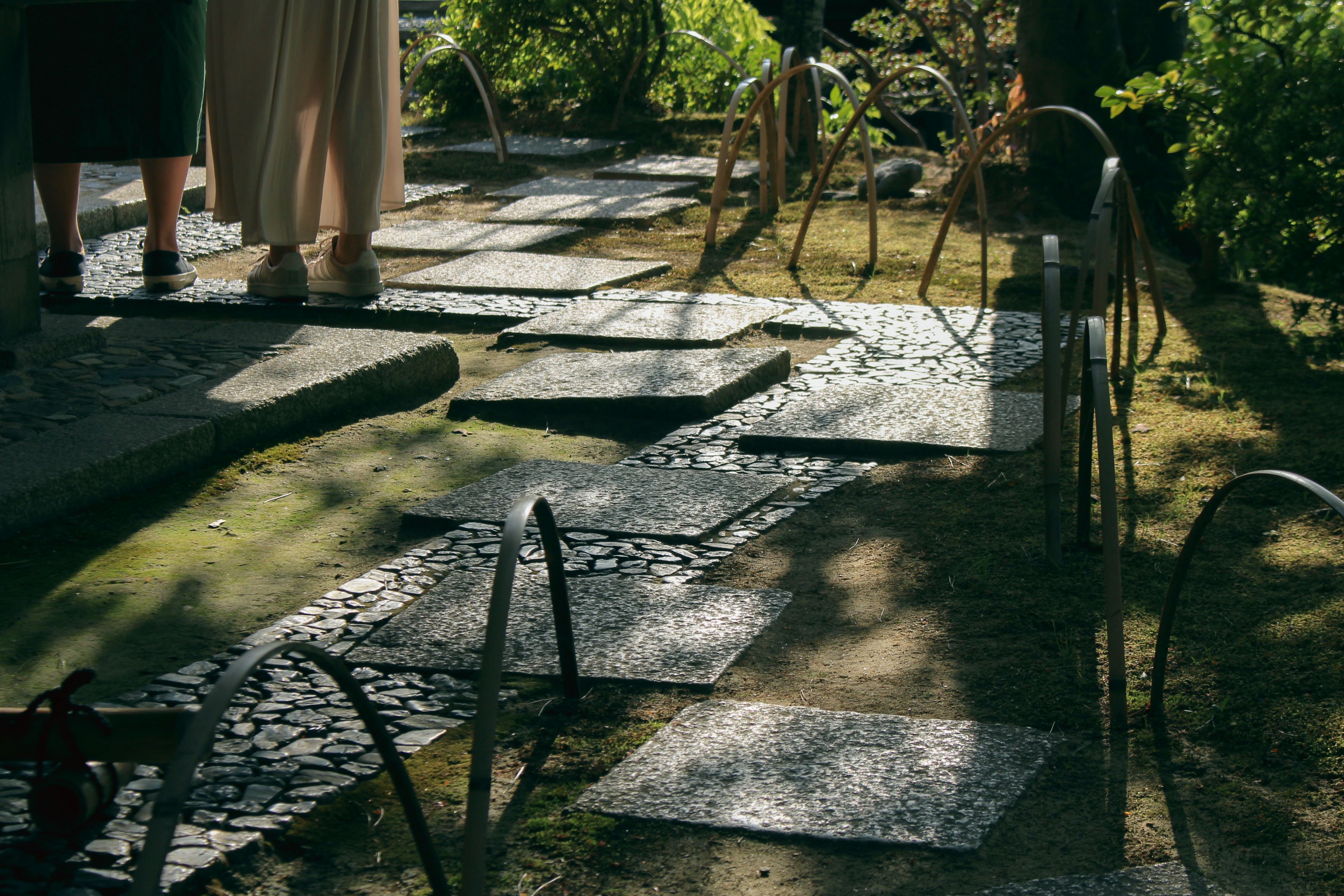
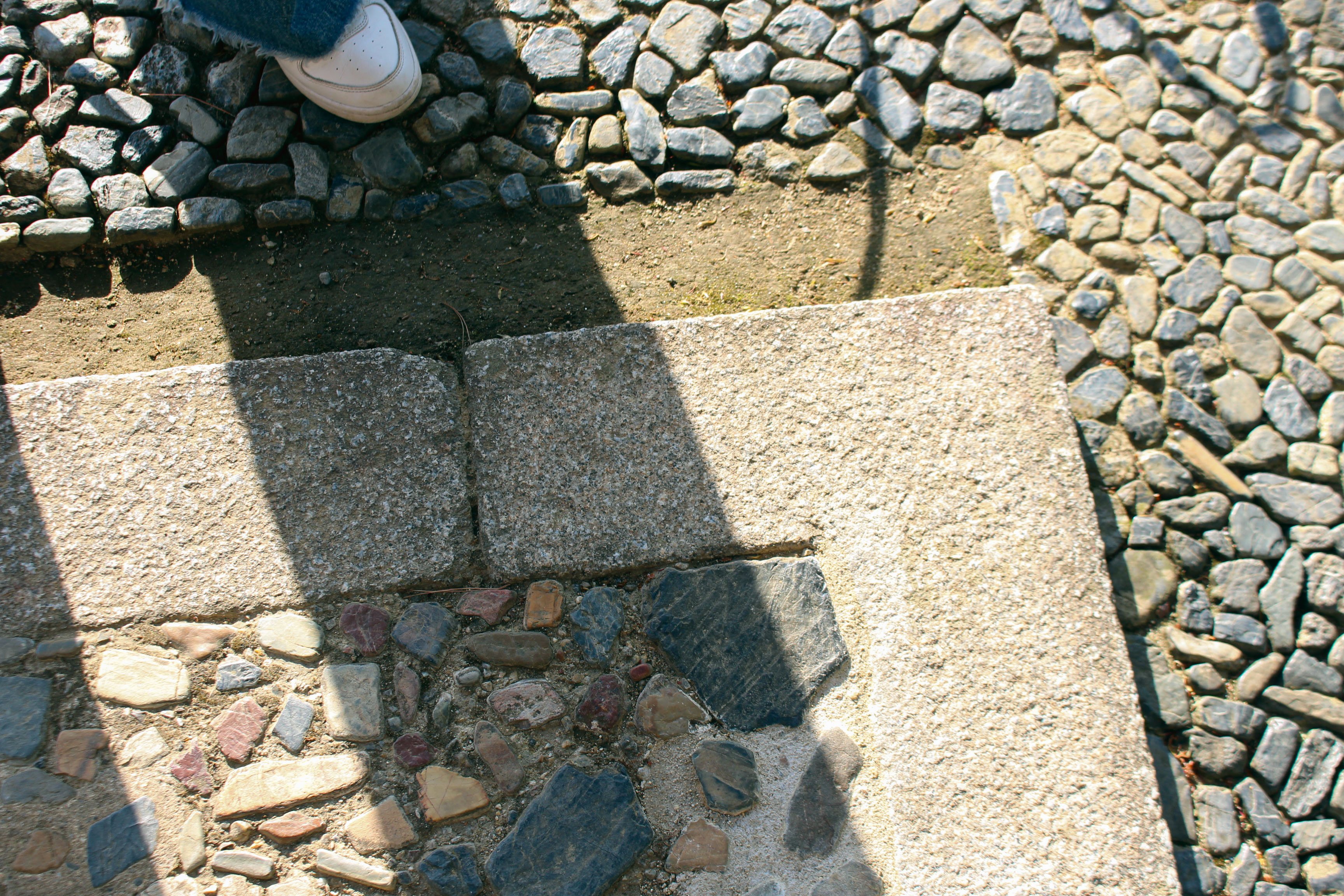
I found the combination of the scattered hailstone pavement (ararekoboshi) and the stepping stones in Onrindo pavilion-園林堂-*. We also used the same design when making a garden before. The placement of the stepping stones is astonishing as they are slightly displaced from the scattered hailstone pavement that surrounds the building. It has a modern vibe. I was also amazed by the paving stone placed between the scattered hailstone pavement and tataki (a traditional Japanese earthen floor), as it is cut hook-shaped so that there are no cuts at the corners. It is really interesting to see that attention to small details.
Onrindo* is the building used as Jibutsu-do hall (the nobility's private Buddha statue hall) in the villa.
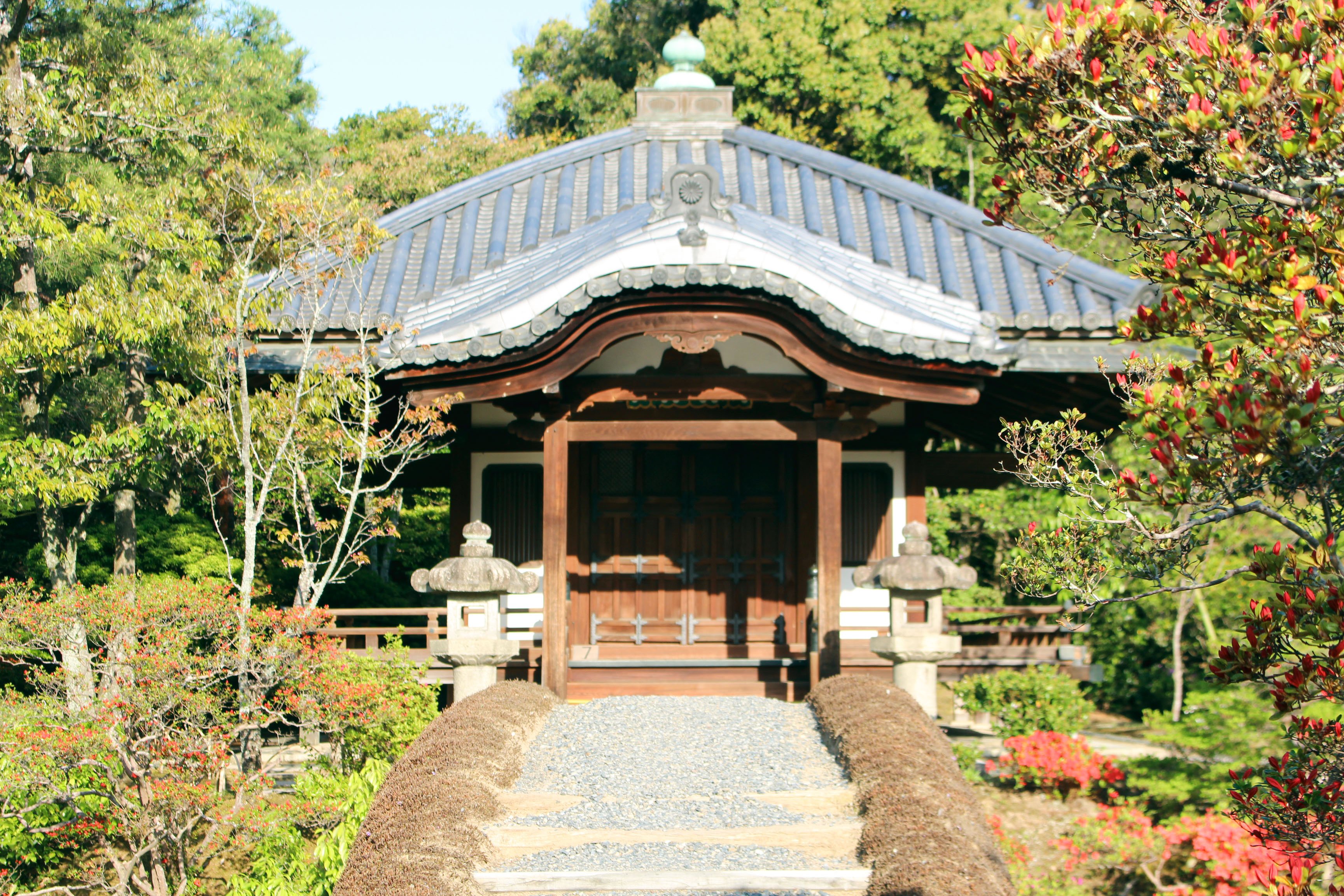
So far, I have shared what I found and felt during my visit to the villa, and the next post will be the last blog about Katsura Imperial Villa!
There are some details that cannot be conveyed on our website. If you have any questions, please do not hesitate to contact us by phone, email or on line. A member of our team will be in touch to discuss your requirements and answer any questions you may have.
077-579-1128
info@oomiteien.com
LINE: @oomiteien